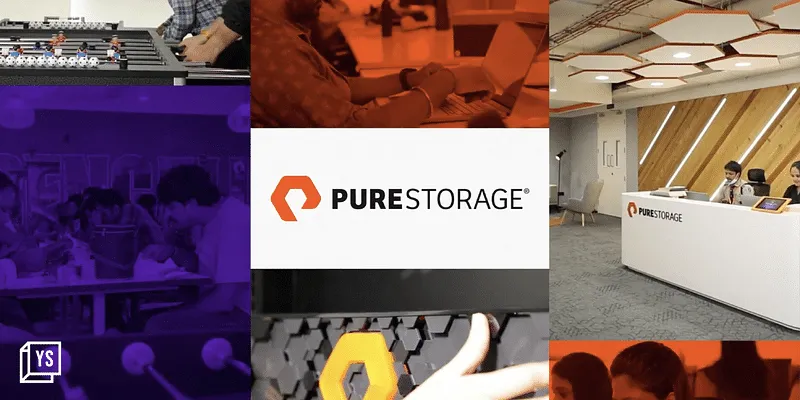Low-code tech market to touch $26.9 billion in 2023: Gartner
The worldwide market for low-code development technologies is projected to total $26.9 billion in 2023, an increase of 19.6% from 2022, according to the latest forecast from Gartner.
Key drivers for this growth include a rise in business technologists and a growing number of enterprise-wide hyper automation and composable business initiatives, according to its forecast.
“Organisations are increasingly turning to low-code development technologies to fulfil growing demands for speed application delivery and highly customized automation workflows,” said Varsha Mehta, Senior Market Research Specialist at Gartner.
Low-code application platforms (LCAPs) are projected to be the largest component of the low-code development technology market, growing 25% to reach nearly $10 billion in 2023.
Bosch Global Software opens new tech centre in Hyderabad
Bosch Global Software Technologies (BGSW), a subsidiary of the Germany-headquartered global engineering company Robert Bosch has opened a new centre at HITEC City in Hyderabad and aims to have around 3,000 professionals by 2025.
This software-centric product centre will focus on automotive engineering and digital enterprise. In the automotive engineering domain, the facility will work on classical powertrain, automotive steering, e-mobility, cross-domain computing (ADAS, Autonomous Driving), active and passive safety, and digital cockpit systems. On the digital enterprise front, it will focus on enterprise IT technologies, cloud technologies, IoT/ML, cyber and embedded security, connected products and industry solutions.

Dignitaries at the inaugural of Bosch Global Software’s new centre in Hyderabad
BGSW has two facilities operational with a professional workforce of about 1,500 associates in Hyderabad.
“BGSW’s new campus is testimony to the engineering talent and innovation focus in Telangana. The government’s focus on providing world-class infrastructure to technology companies has helped attract various corporations in the state, boosting employment and propelling Hyderabad as the ideal tech city in the country”, said K T Rama Rao, Minister for IT, Industries, Municipal Administration and Urban Development of Telangana, who inaugurated the new facility.
Pure Storage posts strong growth in India
Global storage data company Pure Storage, has said it has grown ahead of the market for the Indian geography citing data from IDC.
According to the IDC Quarterly Enterprise Storage Tracker, in Q3, 2022, Pure Storage grew 590.5% while the overall market in India declined by 2.8%.

“The transformation of India into a digital economy is taking place at an astonishing pace, accelerated by the pandemic. Pure’s technologies are a critical enabler for this digitalisation and we are grateful to our customers and partners for putting their faith in our ability to support their digital transformation,” said Ramanujam Komanduri, Managing Director, India, Pure Storage.
In terms of its global performance, for the fiscal third quarter, ended November 6, 2022, Pure Storage recorded revenue of$676 million, up 20% year-over-year and subscription services revenue of $244.8 million, up 30% year-over-year.
India among top 3 countries for IoT malware
India is among the top three countries originating internet of things (IoT) malware inflection in 2022, according to a Cyber Signals Report by Microsoft.
The Cyber Signals Report which features IoT and its operational technology (OT) highlights the rise of cyber risks to critical infrastructure. The International Data Corporation (IDC) estimates there will be 41.6 billion connected IoT devices by 2025, a growth rate higher than traditional IT equipment. Although security of IT equipment has strengthened in recent years, IoT and OT device security has not kept pace, and threat actors are exploiting these devices.
According to Microsoft, it has identified unpatched, high-severity vulnerabilities in 75% of the most common industrial controllers in customer OT networks.
Vasu Jakkal, corporate vice president, security, compliance, identity, and management at Microsoft, said: “As OT systems underpinning energy, transportation, and other infrastructures become increasingly connected to IT systems, the risk of disruption and damage grows as boundaries blur between these formerly separated worlds. For businesses and infrastructure operators across industries, the defensive imperatives are gaining total visibility over connected systems and weighing evolving risks and dependencies.”






![Read more about the article [Weekly funding roundup May 8-12] Venture capital inflow declines without large deals](https://blog.digitalsevaa.com/wp-content/uploads/2022/11/funding-lead-image-1669386008401-300x150.jpg)


![Read more about the article [Startup Bharat] This Jharkhand entrepreneur started up right after college, runs a Rs 50 lakh turnover busine](https://blog.digitalsevaa.com/wp-content/uploads/2021/02/kundannew21-1613645798381-300x150.jpg)
